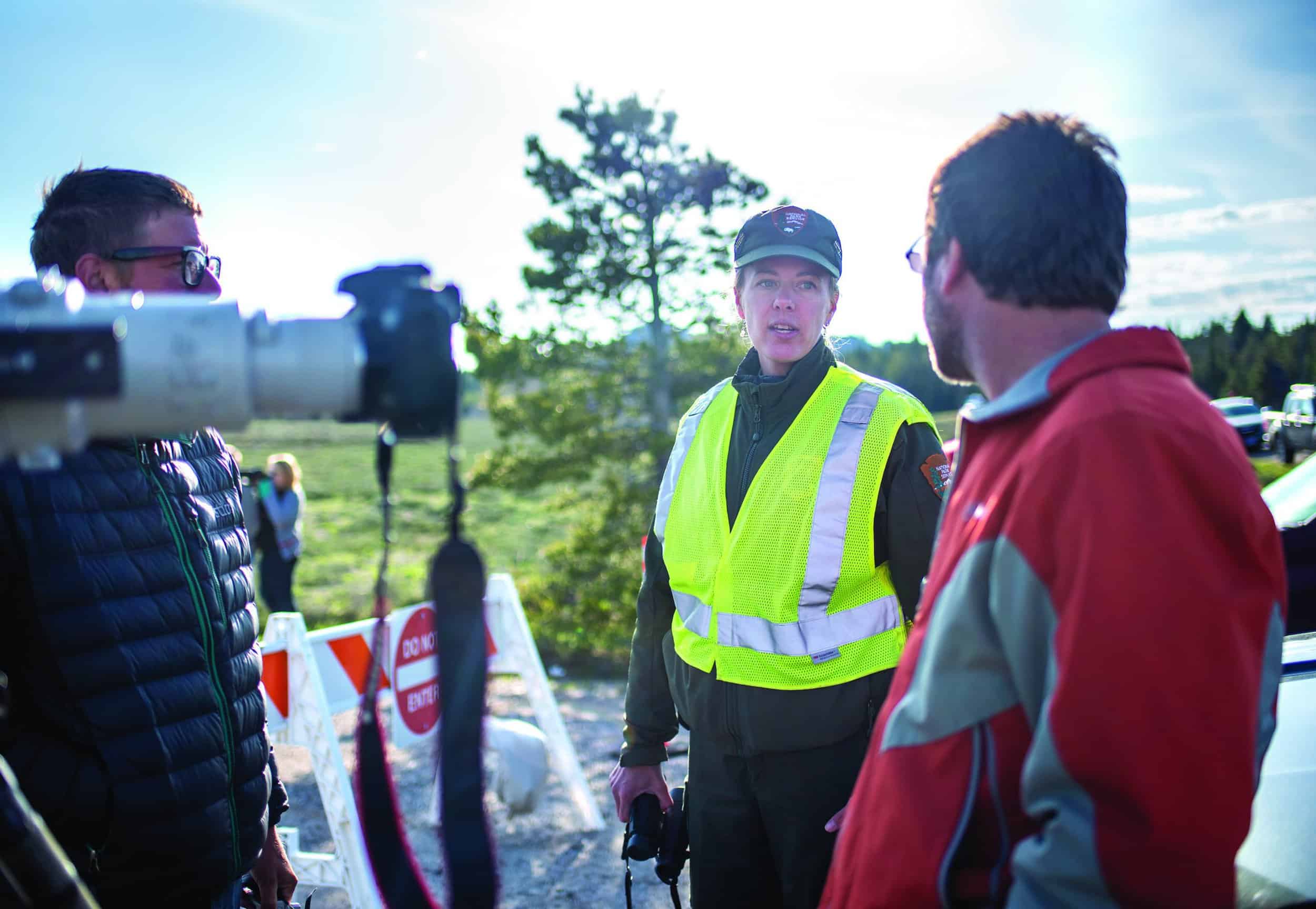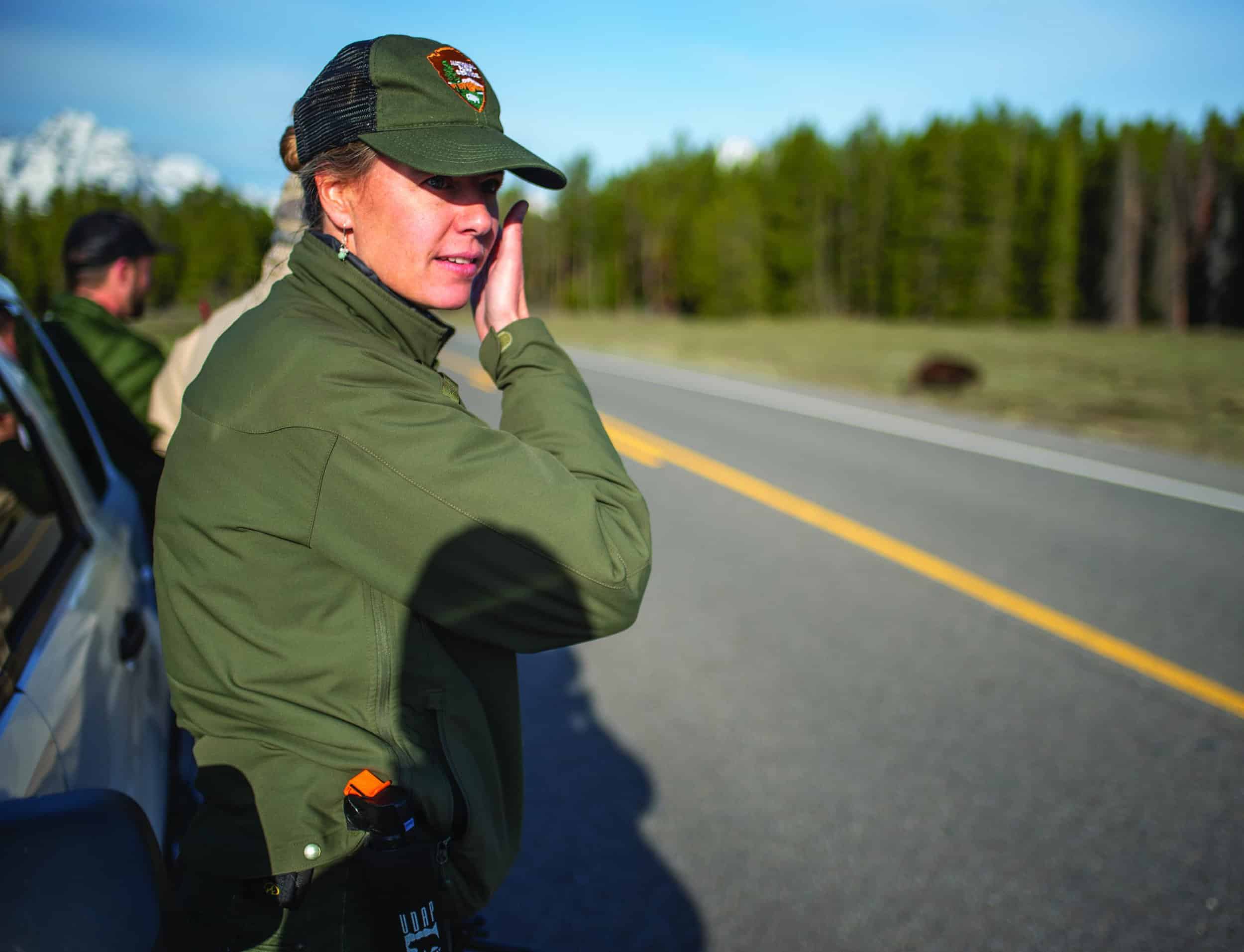Read The
Current Issue
Kate Wilmot
Longtime Grand Teton National Park bear manager is loving her new role leading the park’s fish and wildlife divisions.
// By Mike Koshmrl

In early 2021, longtime Grand Teton National Park biologist Kate Wilmot pivoted professionally. For the nearly 15 years prior, the 47-year-old mother of two had staffed roadside grizzly-induced traffic jams and policed the crowds in her role as leader of the park’s wildlife brigade. She took a promotion and now manages Grand Teton’s fish and wildlife divisions. She oversees all animal management and research at the United States’ 18th busiest national park, which is one of the few national parks that is home to its full suite of native species—from grizzly bears to snowshoe hares to Utah suckers. “I am in learning mode,” Wilmot says. “I was so bear-centric, it was just my world. It’s challenging, but I love it.”
In her new gig, Wilmot’s in charge of managing the wildlife that make her excited to live in a wild place like Jackson Hole. In the spring, she cherishes marveling at megafauna’s wondrous migrations. “One of my favorite things to watch is elk coming off the refuge, tailing a lead cow,” she says. “It’s inspiring for me to see that.” In the summer, she sometimes turns her attention to the less-heralded species that call GTNP home. Last year she was out looking for a conflict black bear at Phelps Lake and was biding her time on the lakeshore. Fish fins kept breaking the surface. “They were Utah suckers spawning,” Wilmot says. “It was so cool.”
In her new job, Wilmot is in charge of managing the wildlife that make her excited to live in a wild place like Jackson Hole.
Wilmot was a city girl decades before she was a branch manager leading a team of biologists in the Greater Yellowstone Ecosystem. She was born and raised in New York City, the daughter of an attorney father and psychologist and university professor mother. Her family was not particularly outdoorsy, and her lone sibling, a younger brother, followed a more conventional path; he lives in the Big Apple and works for Google. But early on, Wilmot found herself drawn to the natural world. Living in one of the largest metro areas in the world, she took what she could get; Long Island bike rides to look for whitetail deer were one pastime.
Wilmot’s introduction to working with bears and people in Grand Teton National Park roughly coincided with the arrival of an animal that’s become as well-known as any in Jackson Hole history: Grizzly 399. It was in 2006 that the now-26-year-old sow first strolled out of the den with a litter of cubs that she then raised within view of roads in the northern part of the park. The next summer, GTNP launched a pilot version of its volunteer-based Wildlife Brigade, hiring Wilmot to lead the corps. “The rest is history,” she says. “I was really the bear manager. The brigade grew really quickly.”
Over the next dozen-plus years, Wilmot was a roadside fixture, often corralling the congregations of people that have grown considerably in conjunction with Grizzly 399’s fame (follow her on Instagram @grizzlybear399). Those day-to-day duties could be chaotic and occasionally aggravating. But the position exposed Wilmot to countless tender moments, both observing the intelligent ursine animals and also her fellow humans’ reactions. “Seeing the American public crying on the side of the road because they’ve come this far to see a grizzly bear is pretty special,” Wilmot says. “It’s like, ‘this is why we’re here.’” JH





